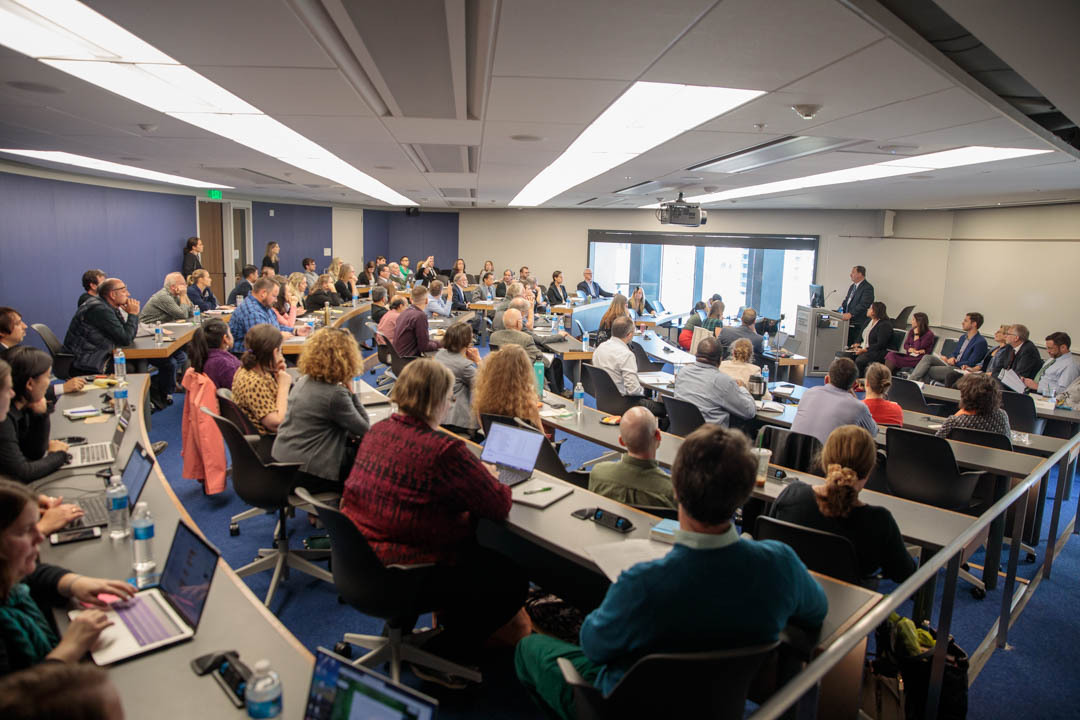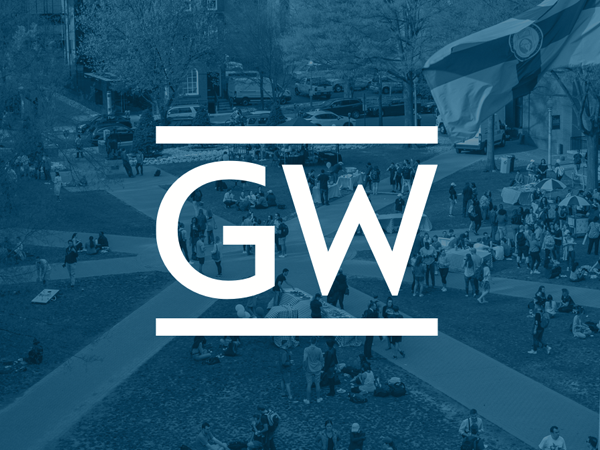By Kristen Mitchell
The first High-Impact Research Strategic Planning Committee public forum was held on Thursday, giving the George Washington University community the opportunity to provide feedback on questions that will inform a strategy for improving research productivity across the university.
The committee will articulate where the university’s research portfolio should be in five years and how to get there. During Thursday’s forum at the Milken Institute School of Public Health, the committee sought feedback on defining and measuring high-impact research in various disciplines, and factors that inhibit or enable high-impact research.
Alan E. Greenberg, M.D. ’82, professor and chair of the Department of Epidemiology at the Milken Institute School of Public Health and chair of the High-Impact Research Committee of the strategic plan, opened the discussion. The ongoing dialogue is meant to be an interactive, transparent and collegial process, he said. Dr. Greenberg and Dr. Diana Burley, vice chair of the committee and a professor in the Graduate School of Education and Human Development, moderated the meeting.
Some faculty and staff in attendance urged the committee to broadly define research impact to include the social and economic benefits of research, as well as the technological advancements and start-ups that spring from innovative research.
Members of the audience voiced concerns about comparing research productivity and impact across disciplines, noting that fields have disparate ways of measuring outcomes and varying timelines for developing and disseminating new knowledge. They shared concerns that this rate of productivity would be highly-valued in the committee recommendations, therefore disciplines with long lead times for work products might be negatively impacted in resource allocation decisions.
Dr. Greenberg said the committee hopes to create a document that will frame research from across disciplines in a way that highlights the diverse spectrum of impact. The committee wants to “positively influence how the university views these issues,” he said. The committee aims to be a conduit for the faculty’s voice on this subject, Dr. Greenberg said.
The committee plans to hold additional public forums in November and December to solicit feedback on other points of interest such as the type of university resources or commitments that would facilitate research. Members of the GW community are also invited to submit feedback through strategic plan website. The committee plans to compile a report on their findings in February.
The committee’s work differs from that of the Research Ecosystem Review, which is part of the Research Initiative, one of the original five initiatives launched in 2018. The Research Ecosystem Review’s primary function is to assess and evaluate the current state of the operational side of the research enterprise.
Faculty members who participated in the Research Ecosystem Review said at the meeting they want to ensure that the committee has access to this report so they can avoid duplicating efforts when possible and focus on finding solutions to challenges that have already been voiced.
Gina Lohr, senior associate vice provost for research, said there is a “symbiotic relationship” between the two processes. Anything coming from the Ecosystem Review will be circulated back into the committee, she said.
“I look at the strategic planning as much more aspirational—where do we want to be in five years,” she said. “This is just the footing, the foundation so we are all talking on the same level and using the same vocabulary.”



